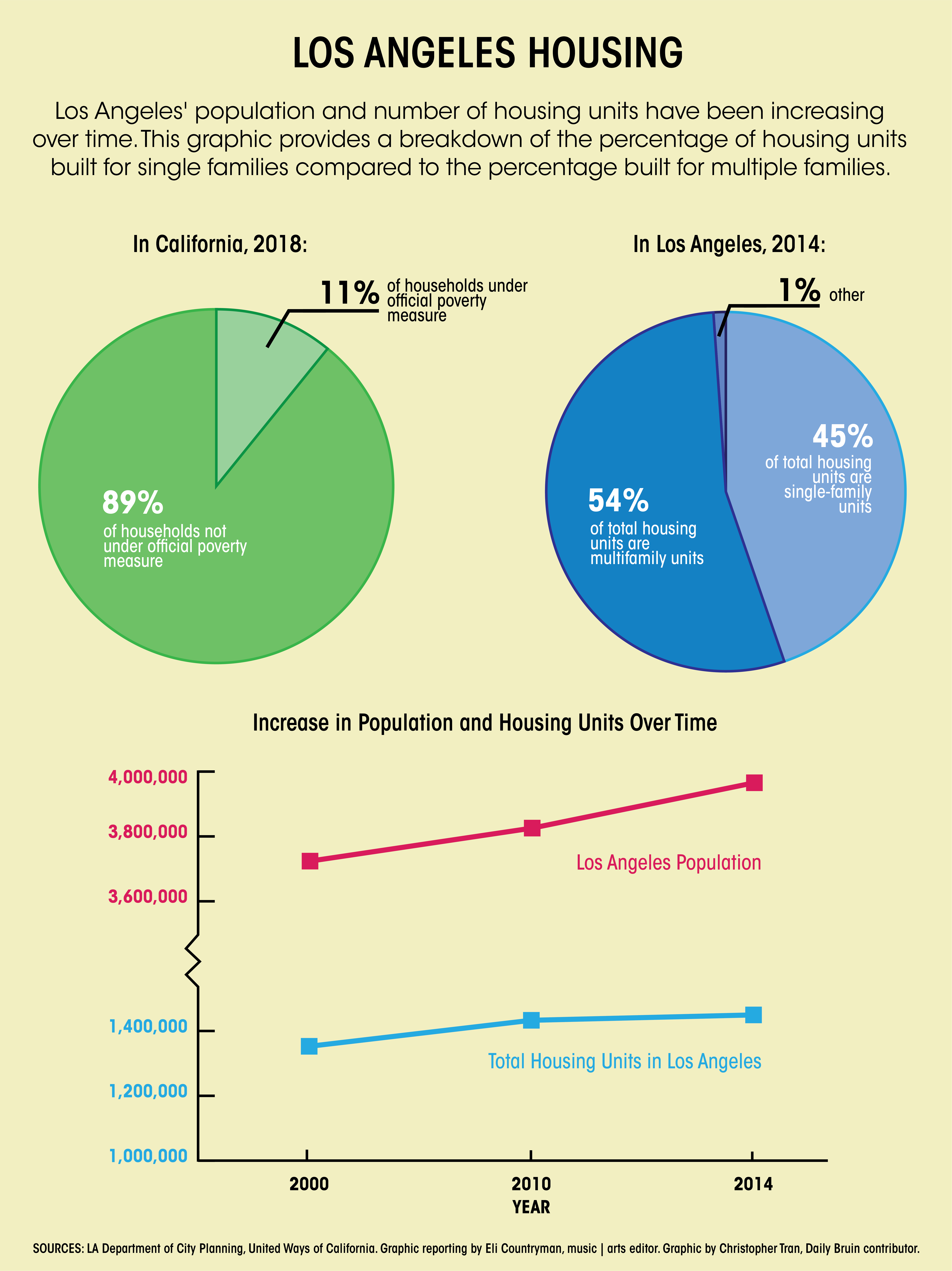Architects discuss innovative designs inspired by research into social changes

"Collective Housing"
Monday, 6:30 p.m.
Perloff Hall
Free
By Olivia Bridgnell
March 3, 2019 10:30 p.m.
It was normal to live without a kitchen in early 20th-century Manhattan.
Architect Anna Puigjaner uses her research on housing trends, such as the perception of kitchens in Manhattan, to understand how society came to define the home. As part of a lecture series put on by the UCLA Architecture and Urban Design department, Puigjaner will discuss how she blends theory and practice by applying research to architectural projects around the world. Her lecture will take place in Perloff Hall on Monday. Puigjaner said she studies the social and historical context in an area to design housing that can be adapted for different occupants, allowing projects to last through time.
“Every project is particular and answers to a particular context,” Puigjaner said “We have to be able to understand how social habits have an actual impact on houses.”
Puigjaner helps run MAIO, a Barcelona- and New York-based architectural firm. MAIO recently completed an apartment building in Barcelona entitled “110 Rooms” because, as its name suggests, it can contain up to 110 similarly sized rooms. By using devices like large sliding double doors between rooms, inhabitants can change the room sizing and layout of the units, Puigjaner said. The design of the building does not determine exactly how the occupant should define the space, she said.
“Any room can be a bedroom. Any room can be the living room, even any room can be the kitchen,” Puigjaner said. “The domestic program is not predetermined. It’s actually the inhabitant who determines where all these domestic pieces are arranged.”
[RELATED: Quarterly exhibit to showcase students’ urban architectural design]
Guillermo López, another MAIO lead architect, said they often design projects that can evolve alongside the area. One such example is a temporary public square where a building is slated for construction once Barcelona recovers from an ongoing economic crisis. MAIO decided to spend the limited budget from the city on an effective lighting system and a simple instructions manual. The manual gives insight such as where to plant trees so the neighborhood residents can develop the square over time.
The “110 Rooms” project was in part inspired by housing in 19th-century Barcelona, López said. At that time, López said rooms were about the same size and could potentially serve as any form of room. He said the company finds inspiration in historical architecture and applies it to projects for the current social environment.
“We try to be innovative, but at the same time, sometimes the past has a lot of answers for the future,” López said.
Jimenez Lai, a UCLA Architecture and Urban Design department lecturer, said Puigjaner creates both aesthetically pleasing and economically and politically thoughtful designs. For example, Puigjaner said different types of occupants, ranging from single persons to families, can live in “110 Rooms” because of its adaptable nature. She said she did not want to use a standard layout for a small family of about four because that social group is not necessarily the most common household in Spain.
Lai said architects with a vision like Puigjaner’s can help fix housing issues in urban cities. He said people are often unable to afford basic housing, even with well-paying jobs. Failed projects such as Pruitt-Igoe have often caused Americans to be against collective housing. This project, cited by Lai as the epitome of poor living conditions, was built in 1954 and then destroyed in the 1970s because of issues such as malfunctioning utilities and criminal activity.
[RELATED: Alumna’s architecture integrates aesthetics with practical design]
Puigjaner said architects can respond to future social changes by understanding how people come to value certain elements of a household. Americans currently view kitchens as a necessity, but in the late 19th century and early 20th century, it was more common to share or live without a kitchen in the U.S., particularly in Manhattan, she said. At that time, Puigjaner said kitchens and kitchen work could be considered an annoyance rather than a necessary comfort.
“The idea of comfort is a total construction that not only relies on architecture and design, but relies on many, many issues,” Puigjaner said. “So it’s important not to take things for granted and understand, ‘Where are we heading to?'”
At the end of the day, a lot of the company’s decisions depend on the project developer, Puigjaner said. While the building “110 Rooms” was completed for a private client, Puigjaner said she recently designed a public housing unit in Mexico. She said they transferred concepts from “110 Rooms” to the new design, such as making the sizes of living spaces adaptable for different occupants. In the project, she said, the housing units range in price, which allows people of different socioeconomic groups to live in the same building.
“It’s quite an interesting and healthy way of building cities,” Puigjaner said. “Because it allows you to avoid, first, gentrification of an area, and at the same time to have a good social equilibrium in the neighborhood.”


